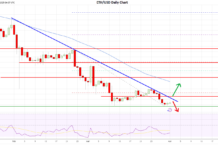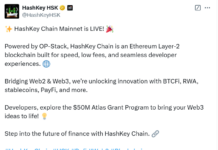LUCKNOW (CoinChapter.com) – Ethereum, long heralded as the pioneer of smart contracts and decentralized finance (DeFi), finds itself at a crossroads. Recent developments in the cryptocurrency market have raised questions about whether Ethereum still justifies the investment hype it once commanded.
One of the most pressing issues facing Ethereum is its underperformance compared to its top rival, Solana, in the Layer-1 (L1) blockchain space. Solana, often dubbed the “Ethereum killer,” has gained significant traction due to its high throughput, low transaction costs, and developer-friendly environment. While Ethereum’s transition from Proof of Work to Proof of Stake with “The Merge” was a monumental upgrade, it has yet to translate into a significant competitive advantage.
Solana’s ecosystem, which includes over 350 decentralized applications (dApps) and 1.28 million unique active wallets, is growing rapidly. Projects like Jupiter and Raydium leverage Solana’s speed to offer superior user experiences, making it an attractive alternative for developers and users who might otherwise rely on Ethereum.

This growth has put Ethereum on the defensive, forcing it to accelerate its scaling solutions and ecosystem development.
Muted Response to ETF Launches
Ethereum’s muted market response to the launch of several Ether Futures ETFs (Exchange Traded Funds) has been a point of concern. Typically, the introduction of such financial instruments would generate significant interest and upward momentum for the underlying asset. However, ETH price has remained relatively stagnant, failing to capitalize on this opportunity.
This lackluster performance could be indicative of waning investor enthusiasm, potentially fueled by concerns over Ethereum’s future scalability, competition, and state regulation. The fact that these ETFs have not ignited a rally suggests that the broader market is re-evaluating Ether’s long-term value proposition.
Ethereum’s Inflationary Pressures Raises Question
Post-Merge, Ethereum was expected to become deflationary. The implementation of EIP-1559 was designed to burn a portion of transaction fees, potentially making ETH a deflationary asset. However, the reality has been more complex. Ether’s supply dynamics are still subject to inflationary pressures. The burn rate has not consistently outpaced issuance, leading to periods where the supply of ETH continues to grow rather than shrink.

This inconsistency undermines the deflationary narrative and raises questions about the long-term sustainability of Ethereum’s monetary policy. It also challenges the notion of ETH as a store of value comparable to Bitcoin, potentially impacting its investment appeal.
The Layer-2 Scaling Strategy — A Double-Edged Sword
Ethereum pivoted to a Layer-2 (L2) scaling roadmap in 2020, moving away from its original execution sharding plan. In this new approach, Ethereum delegates transaction execution to a myriad of L2s while providing them with data availability to ensure a high degree of security. Currently, Ethereum offers data availability through proto-danksharding (6 data blobs) and plans to eventually enable full danksharding (64 blobs).
This strategy has shown positive results, with rollups now accounting for 87% of daily Ether transactions, which is more than six times that of the Ethereum mainnet.

L2 transactions typically cost less than a cent, allowing for growth in users and use cases. Vitalik Buterin even argues that this L2 design is superior to execution sharding as it allows for more experimentation without overloading Ethereum’s consensus.
However, critics argue that Layer-2s are “value extractive.” They contend that execution and transaction ordering (MEV) generate the most value in the crypto stack, while data is becoming commoditized. This view suggests that L2s retain most of the value, not Ether, in this rollup-centric scaling framework.
Furthermore, Ethereum’s gas fees are at their lowest in years, even as we enter a bull market.

This has led some to question whether Ethereum can maintain its status when inflation exceeds the burn rate. Critics also raise concerns about the economic incentives to decentralize L2 sequencers and the potential for successful L2s to eventually move off Ethereum to avoid paying “rent.”
Is Ethereum Still a Good Investment?
A recent analysis by Messari attempts to address these concerns and evaluate Ethereum’s investment potential. The report highlights that while Ethereum faces challenges, it still possesses substantial strengths, including its extensive network effects, robust developer community, and ongoing upgrades.
The introduction of Layer-2 solutions like Optimism and Arbitrum, which aim to improve scalability and reduce fees, could address some of Ethereum’s current shortcomings. However, the report also notes that the competitive landscape is intensifying, with networks like Solana, Avalanche, and Binance Smart Chain continuing to eat into Ethereum’s market share.
Ethereum’s Dominance in DeFi Across L2s
Despite concerns about value leakage to L2s, Ethereum maintains a strong presence in DeFi applications across major L2 networks. For instance, on Aave, one of the largest lending protocols:
- On Arbitrum, ETH and ETH-based derivatives account for over 50% of supplied assets, representing nearly $590 million in value.
- On Base, ETH and ETH-based derivatives make up over 80% of supplied assets, totaling nearly $140 million.
- On Optimism, ETH and ETH-based derivatives constitute nearly 50% of supplied assets, amounting to about $110 million.
This ubiquity of ETH across L2s shows its continued relevance and demand within the ecosystem.
The post Is Ethereum Actually Worth The Investment Hype? appeared first on CoinChapter.



